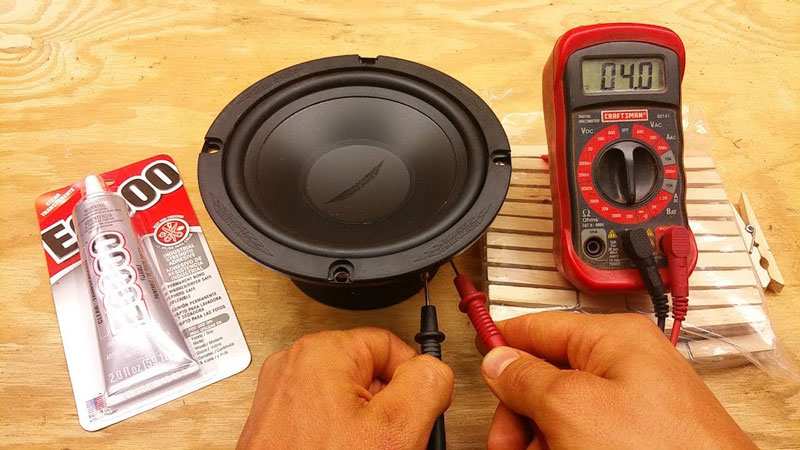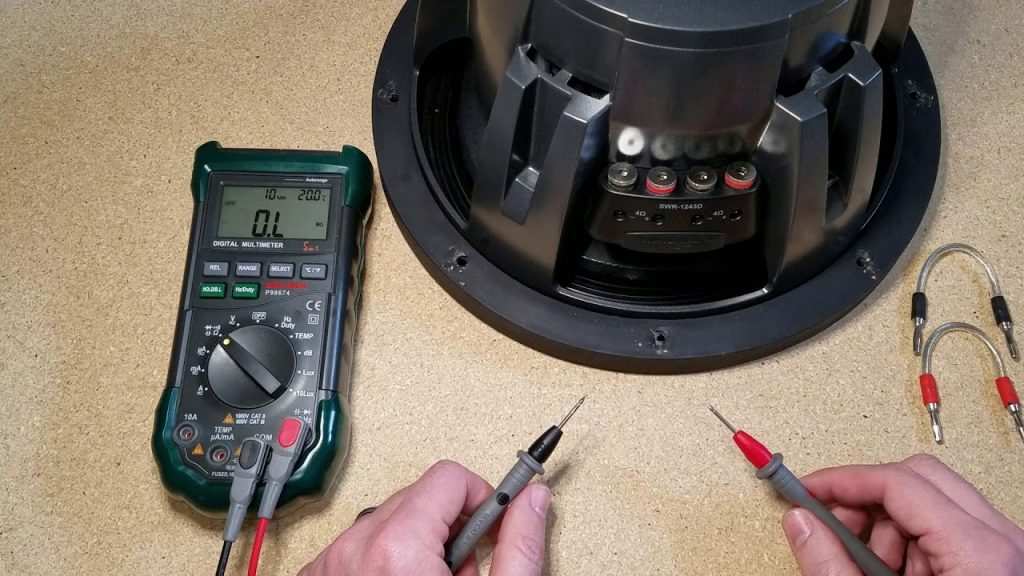
If your subwoofer has suddenly ceased working, it's likely blown. Blowing up is a regular occurrence in sub woofers. And it can happen for a variety of reasons, including using too much power or overloading the sub with sound, causing the voice coil to split from the speaker cone rendering the subwoofer useless.
However, before jumping to any conclusions, be sure you actually have a blown subwoofer.
Here are some ways you can tell if the sub is blown.
What causes subwoofers to blow?
There are mainly two reasons which result in blown subwoofers: Excessive power and distorted signal.
In most cases, excessive power is the cause of blown subwoofers. If you load too much power on to a subwoofer in an excitement to get more volume, then eventually you are going to harm your subwoofer.
Note that every subwoofer has the ability to handle more power than the advertised RMS (root mean square). But you need to ensure that you get a clear and distortion-free sound while cranking up the volume.
This is one of the most common symptoms of a blown subwoofer. We frequently find ourselves increasing distorted signals in an attempt to rectify them, which is actually quite harmful to your subwoofer. It's made worse by the fact that we don't always notice a distorted signal until it's at such a high level that it's already causing damage.
What are the tools needed to test a subwoofer without an amplifier?
As long as you have the right set of tools, you can easily conduct a subwoofer test without an amplifier. Here are the tools that you need :

How to tell if your subwoofer is blown?
There are a few signs to tell if your subwoofer is actually blown or just malfunctioning. Here are some of them :
Is your subwoofer making noise when turned on? If no. then the subwoofer is already blown if you play a song and don't hear any sound. But this can be tricky, because at times, even if your subwoofer is perfectly safe, you don't listen to any volume.
So to do a check. Make sure the audio signals are reaching the subwoofer. When a signal wire is destroyed, there is no sound at all.
You may hear a slight buzzing noise at times. But if that's not happening, your subwoofer is undoubtedly blown. Because in that case, the sub might be receiving power and audio signals but does not produce any sound or bass.
Your subwoofer may be partially blown if it produces a distorted sound. Sometimes you may not find any distorted cracking sounds at low volumes. However, when you gradually increase the volume, it begins to distort, and the distortion continues to develop as the volume rises.
At the maximum level, you may hear the distortion more prominently than the sound. A blown subwoofer sound will sound like a buzzing sound, so you can identify it quickly.

There are chances that the voice coil to get blown, so check that, remove the lid to expose the subwoofer cone, and evaluate its movement. Move the cone with both hands, be cautious as to not exert too much pressure.
Your subwoofer is definitely blown if the cone does not move at all or moves more than usual. It's also a sign of a damaged cone if it's moves normally but sounds distorted.
Using a multimeter is one of the most effective ways to inspect your subwoofer. You can very quickly and easily verify the current state of your subwoofer if you have this gadget. If the resistance value does not remain constant, your subwoofer's cone is most likely blown.
Measure the voltage, resistance and current with a multimeter. This allows you to see if there is a lack of electrical resistance, which indicates a faulty coil.
If you get unstable readings, your subwoofer's cone is most likely blown.
What to do if your subwoofer is blown?
Once you've determined that your sub is blown, the first thing you should do is remove it from your house or automobile audio system. Allowing it to remain connected to your system can cause damage to your audio equipment, worsening the problem. Your subwoofer may still be protected by a warranty if it is still new. Before disassembling the woofer, be sure the guarantee is still valid.
If you're lucky, the manufacturer will send you a replacement or repair. If your blown sub was old and you've been thinking about a new one, this might be a good option to upgrade to that new model you've always wanted. If you don't want to spend the money on a new sub, you could try repairing the existing one. The method of repairing a blown sub is simple and can be done in the comfort of your own home.
FAQ:
Recone is the term used to describe a subwoofer or speaker that has been completely rebuilt. When you have an old difficult sub, removing the already worn out pieces is sometimes the best option, after doing the subwoofer test.
Clipping is a sort of sound distortion that happens when an amplifier clips an audio waveform.
- The THX standard and suggested crossover frequency is 80 HZ.
- 150-200 Hz for an on-wall or small 'satellite' speakers.
- 80-100 Hz for a mid-size center, and bookshelf speakers.
- 60-80 Hz for a big center, surround, and bookshelf speakers.
You can fix a blown subwoofer by following the above methods. However, if you can't fix a subwoofer, you can always buy a new one. One of the best aspects about purchasing a new subwoofer is that there are almost certainly better options available than the one you already have. There are many top rated subwoofers under 500; you can quickly get one in an affordable price.
CONCLUSION
If you overwhelm a sub or put too much sound through, it can easily blow. The level of damage varies from one subwoofer to the next; some models may only receive a half impact, while others may receive full-blown damage.
You can check if your subwoofer is blown using any or all of the methods explained above. A blown sub does not necessarily mean replacement. You can try to fix it yourself to see if it works again.

Hello readers, welcome to my blog! I’m Stefan. I’m in hard love with the music and used to collect all kinds of musical instruments at my garage. While looking for the best instruments, initially, I’ve struggled a lot. Like me, some of you might be struggling to choose the best musical equipment. So, keep reading my articles and get the best musical instrument that is worth your pay.



